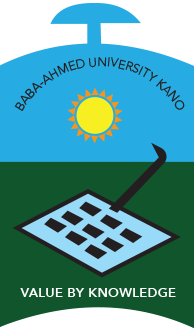Commerce Keypoints: Production; Production is the process of converting raw materials into finished goods or services to satisfy consumer needs and wants. In this note, we will discuss the factors, characteristics, and rewards of production, division of labor and specialization, and the types of production.
Study other commerce keypoints here
Commerce Keypoints: Production
(i) Factors, Characteristics, and Rewards:
a. Land: Land refers to all natural resources such as forests, minerals, water, and agricultural land used in production. Landowners are rewarded with rent for allowing the use of their land in the production process.
b. Labor: Labor is the human effort put into production, including physical and mental skills. Workers are rewarded with wages and salaries for their efforts.
c. Capital: Capital refers to the machinery, equipment, and tools used in production. Capital owners are rewarded with interest for providing the capital.
d. Entrepreneurship: Entrepreneurship refers to the ability to identify a business opportunity, mobilize resources, and manage risks to create and run a business. Entrepreneurs are rewarded with profit for their efforts.
(ii) Division of Labor and Specialization:
Division of labor is the process of breaking down production into specialized tasks, with each worker performing a specific task. Specialization refers to the focus on a particular task, skill, or activity in the production process.
Division of labor and specialization leads to increased productivity, efficiency, and quality of output. This is because workers become more skilled in their specific tasks, leading to faster completion of tasks, better quality products, and a reduction in wastage.
Advantages of Division of Labor and Specialization:
- Increased productivity and efficiency.
- Reduction in wastage and time wastage.
- Quality improvement.
- Increase in output.
(iii) Types of Production:
a. Primary production: Primary production involves the extraction of raw materials from nature, such as mining, fishing, and agriculture. This type of production is crucial in the supply chain of many goods and services.
b. Secondary production: Secondary production involves the conversion of raw materials into finished goods. This includes manufacturing and processing industries, such as factories and mills.
c. Tertiary production: Tertiary production involves the provision of services to consumers. This includes service industries such as finance, healthcare, education, and hospitality.
In conclusion, production is a fundamental concept in commerce, and it involves the conversion of raw materials into finished goods and services to meet consumer needs and wants. The factors of production include land, labor, capital, and entrepreneurship, and the rewards of production are rent, wages, interest, and profit. Division of labor and specialization increases productivity, efficiency, and quality of output, and the types of products include primary, secondary, and tertiary production.
(i) Factors of Production and their rewards:
There are four factors of production: land, labor, capital, and entrepreneurship. The rewards for these factors are as follows:
- Land: Rent
- Labor: Wages
- Capital: Interest
- Entrepreneurship: Profit
(ii) Division of Labour and Specialization:
Division of labor refers to the separation of tasks among workers, while specialization refers to the development of expertise in a particular area. The main difference between the two is that division of labor involves breaking down complex tasks into simpler ones and assigning them to workers, while specialization involves workers focusing on a particular area to develop their skills.
The advantages of division of labor and specialization include:
- Increased efficiency: By breaking down a task into smaller parts and having workers focus on specific areas, production can become more efficient.
- Cost reduction: Specialization can reduce the time and cost of production since workers become more skilled and faster at their tasks.
- Improved quality: Specialization allows workers to become experts in their area, which can lead to higher-quality products.
- Increased output: By increasing efficiency and reducing costs, production can be increased, leading to higher output.
(iii) Types of Production: The types of production are as follows:
- Primary Production: This involves the extraction of raw materials from the earth. Examples include farming, fishing, and mining.
- Secondary Production: This involves the conversion of raw materials into finished goods. Examples include manufacturing and construction.
- Tertiary Production: This involves the provision of services to consumers. Examples include banking, healthcare, and entertainment.












